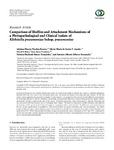Use este identificador para citar ou linkar para este item:
http://biblioteca.incaper.es.gov.br/digital/handle/item/166Registro completo de metadados
| Campo DC | Valor | Idioma |
|---|---|---|
| dc.contributor.author | KORRES, A. M. N. | pt_BR |
| dc.contributor.author | AQUIJE, G. M. de F. V. | pt_BR |
| dc.contributor.author | BUSS, D. S. | pt_BR |
| dc.contributor.author | VENTURA. J. A. | pt_BR |
| dc.contributor.author | FERNANDES, P. M. B. | pt_BR |
| dc.contributor.author | FERNANDES, A. A. R. | pt_BR |
| dc.contributor.other | Adriana Marcia Nicolau Korres, UFES/IFES; Gloria Maria de Farias V. Aquije, UFES/IFES; David S. Buss, UFES/IFES; Jose Aires Ventura, Incaper; Patricia Machado Bueno Fernandes, UFES; Antonio Alberto Ribeiro Fernandes, UFES. | pt_BR |
| dc.date.accessioned | 2014-01-08T12:50:34Z | - |
| dc.date.available | 2014-01-08T12:50:34Z | - |
| dc.date.created | 2013 | pt_BR |
| dc.date.issued | 2014-01-08 | pt_BR |
| dc.identifier.other | 1488 | pt_BR |
| dc.identifier.uri | http://localhost:8080/digital/handle/item/166 | - |
| dc.identifier.uri | http://biblioteca.incaper.es.gov.br/digital/handle/item/166 | - |
| dc.description | Some bacterial species can colonize humans and plants. It is almost impossible to prevent the contact of clinically pathogenic bacteria with food crops, and if they can persist there, they can reenter the human food chain and cause disease. On the leaf surface, microorganisms are exposed to a number of stress factors. It is unclear how they survive in such different environments. By increasing adhesion to diverse substrates, minimizing environmental differences, and providing protection against defence mechanisms, biofilms could provide part of the answer. Klebsiella pneumoniae subsp. pneumoniae is clinically important and also associated with fruit diseases, such as pineapple fruit collapse. We aimed to characterize biofilm formation and adhesion mechanisms of this species isolated from pineapple in comparison with a clinical isolate. No differences were found between the two isolates quantitatively or qualitatively. Both tested positive for capsule formation and were hydrophobic, but neither produced adherence fibres, which might account for their relatively weak adhesion compared to the positive control Staphylococcus epidermidis ATCC 35984. Both produced biofilms on glass and polystyrene, more consistently at 40°C than 35°C, confirmed by atomic force and high-vacuum scanning electron microscopy. Biofilm formation was maintained in an acidic environment, which may be relevant phytopathologically. | pt_BR |
| dc.language | pt_BR | pt_BR |
| dc.publisher | The Scientific World Journal, vol. 2013, Article ID 925375, 6p., 2013. | pt_BR |
| dc.subject | Klebsiella pneumoniae | pt_BR |
| dc.title | Comparison of biofilm and attachment mechanisms of a Phytopathological and Clinical Isolate of Klebsiella pneumoniae Subsp. pneumoniae. | pt_BR |
| dc.type | -- | pt_BR |
| dc.ainfo.id | 1444 | pt_BR |
| dc.ainfo.lastupdate | 2014-01-08 | pt_BR |
| dc.ainfo.depositante | Merielem Frasson | pt_BR |
| dc.format.extent2 | 6p. | pt_BR |
| dc.subject.nalthesaurus | Phytopathological | pt_BR |
| dc.identifier.doi | http://dx.doi.org/10.1155/2013/925375 | pt_BR |
| Aparece nas coleções: | Memória Técnica do Incaper  | |
Arquivos associados a este item:
| Arquivo | Descrição | Tamanho | Formato | |
|---|---|---|---|---|
| Comparison-of-Biofilm-2013.pdf | 2,61 MB | Adobe PDF |  Visualizar/Abrir |
Os itens no repositório estão protegidos por copyright, com todos os direitos reservados, salvo quando é indicado o contrário.
